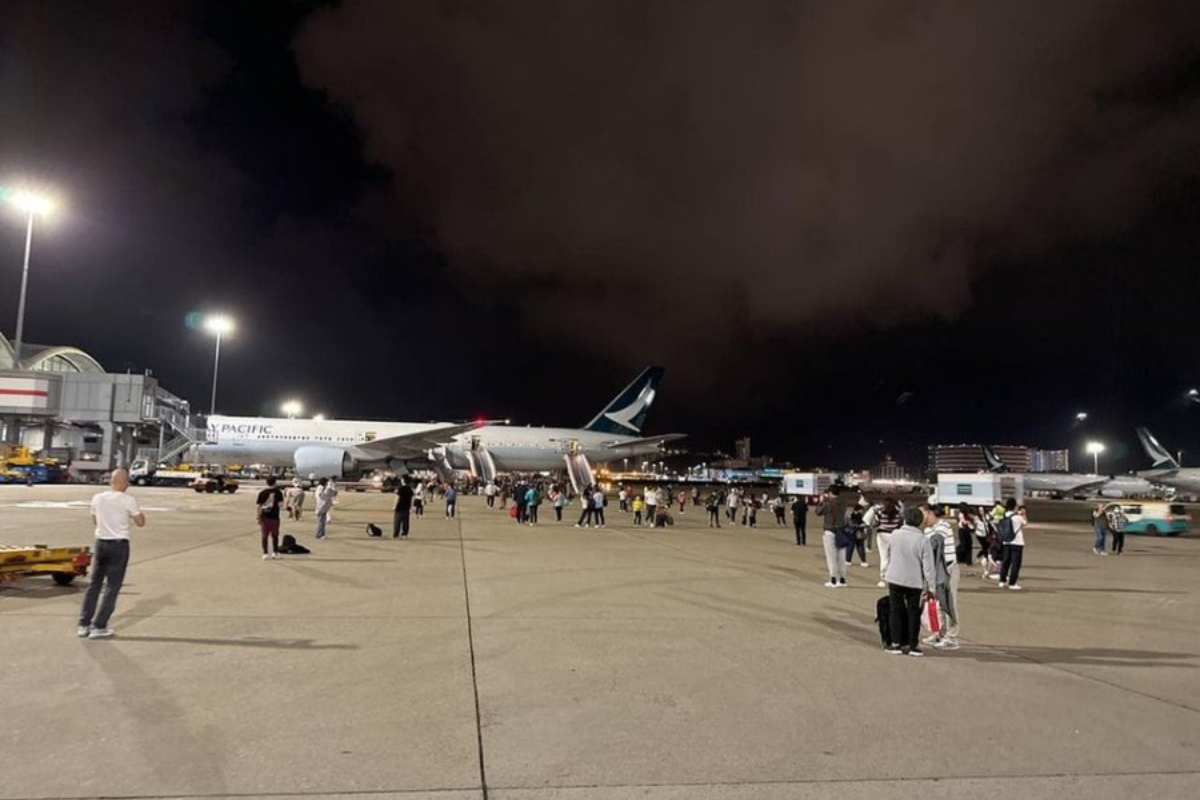
Eleven passengers on a packed Boeing 777-300 operated by Cathay Pacific were injured when an evacuation was ordered via inflatable escape slides because the brakes had apparently overheated following an aborted takeoff.
The evacuation took place overnight at Hong Kong International Airport after the pilots of Cathay Pacific flight CX880 to Los Angeles noticed a technical issue while the 13-year-old aircraft was speeding along the runway.
As more video emerges (via HKADB on Facebook) look at the state of evacuation (seems like a straggler) and a bag is in the way (also the passenger seems in no hurry while filming) @PaulWeatherilt pic.twitter.com/J6WEgCiMNe
— Danny Lee (@AirEVthingTRNSP) June 24, 2023
Two of the injured passengers remain in hospital while nine have already been discharged and the majority of the affected passengers have already departed for Los Angeles on a new flight arranged by the beleaguered airline.
Chaotic video of the evacuation showed passengers leaving the aircraft with hand luggage while others stayed inside the aircraft, seemingly in no hurry to get out, after the majority of passengers and crew had already evacuated the plane.
Cathay Pacific confirmed that 293 passengers and 17 crew members were onboard the aircraft. Of those, 283 passengers have carried onto Los Angeles on the new flight.
The original flight was meant to depart Hong Kong just after midnight on Saturday but returned to the gate after the takeoff was aborted. Due to the aborted takeoff, the brakes of the aircraft appear to have overheated which may have caused some small flames.
“After the aircraft returned to the gate a precautionary passenger evacuation was initiated by the crew, and passengers exited the aircraft using five-door escape slides,” a Cathay Pacific spokesperson explained.
“Our priority is to look after all affected passengers and crew,” a statement from the airline continued.
It’s understood that the crew members have been stood down following the incident, which is standard practice in a critical incident of this nature.
There is a high risk of injury during an emergency evacuation via escape slides, which is why some airlines and aviation regulators recommend that they only be used in the most serious of incidents rather than as a precautionary measure.
In this case, because the aircraft had already returned to the gate and a jetbridge had been attached to the plane, pilots sometimes consider whether a ‘precautionary rapid disembarkation’ is a better alternative than an emergency evacuation.
A rapid disembarkation involves getting passengers off via the jetbridge as quickly as possible and without their hand luggage. There is less chance of injury, although it is clearly a slower process than using escape slides.
Accident investigators will likely review whether an emergency evacuation was necessary and then attempt to determine how effective the crew were at directing the evacuation. There will also be pressure to review the issue of passengers taking luggage with them and what can be done to stop this from happening in the future.
Related
Mateusz Maszczynski honed his skills as an international flight attendant at the most prominent airline in the Middle East and has been flying ever since... most recently for a well known European airline. Matt is passionate about the aviation industry and has become an expert in passenger experience and human-centric stories. Always keeping an ear close to the ground, Matt's industry insights, analysis and news coverage is frequently relied upon by some of the biggest names in journalism.








If slides are used, I would run for my life. If an expedited deplaning, I might grab one bag. The airline should disclose in press releases how soon the passengers got their carry on luggage back.
On take off, I keep my passport in my pocket in case there’s an evacuation. Such easier to have it if in a foreign country.